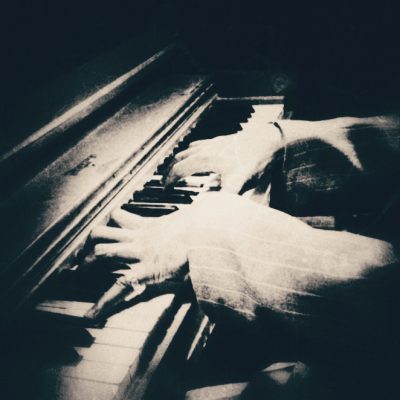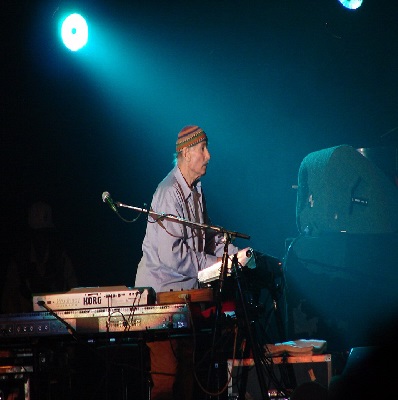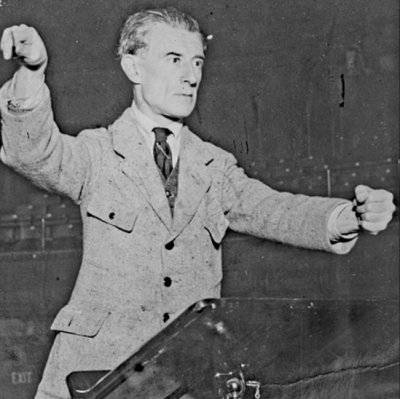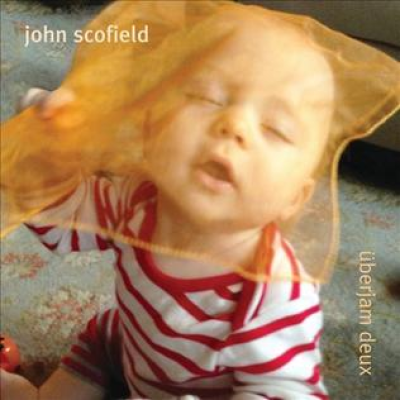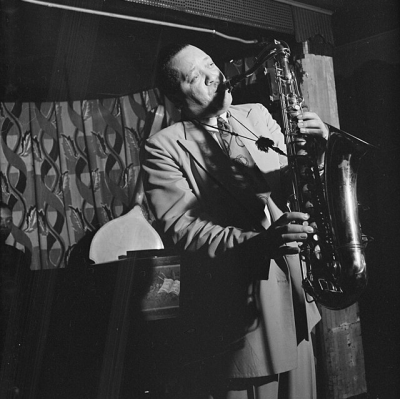.
.
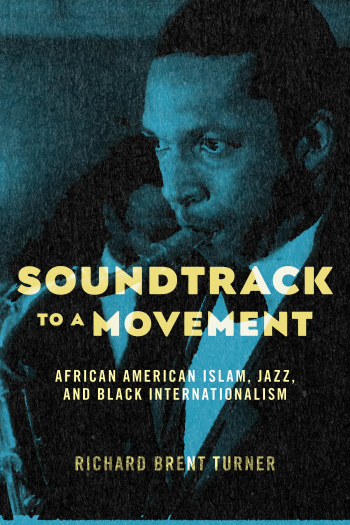
.
.
…..The esteemed scholar Richard Brent Turner’s Soundtrack to a Movement: African American Islam, Jazz, and Black Internationalism is a rich and enlightening reading experience that focuses on the values shared by post World War II jazz and Islam – Black affirmation, freedom, and self-determination. I will soon have the privilege of interviewing Turner about his book, and expect it to be published sometime in February.
…..Meanwhile, with the consent of Turner and his publisher, New York University Press, the following excerpt will give you a sense of the quality of the work found throughout the book. In it, Turner writes about Max Roach and his wife, the singer Abbey Lincoln, and the contributions they made to social justice, constructed in the intersecting worlds of African American Islam and jazz.
.
.
___
.
.
“Muslim jazz artists inspired interest in Sunni, Ahmadi, and the Nation of Islam communities, but the Islam of swing, bebop, hard bop, and free jazz was often not so much a theology as it was a politics, a poetry, a culture of cool. Richard Brent Turner’s book reveals how Islam breathed the spirit of supreme love and international Black liberation into America’s greatest music. It is required reading for everyone interested in the entangled story of jazz and Islam.”
-Edward E. Curtis IV, William M. and Gail M. Plater Chair of the Liberal Arts, Indiana University, Indianapolis
.
.
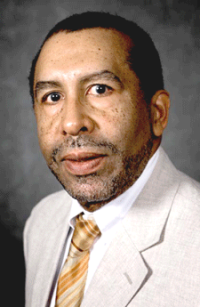
Richard Brent Turner is Professor in the Department of Religious Studies and the African American Studies Program at the University of Iowa. He is the author of Jazz Religion, The Second Line, and Black New Orleans, New Edition, and Islam in the African-American Experience, Second Edition. Turner is a 2020 American Council of Learned Societies Fellow.
.
.
Excerpted from Soundtrack to a Movement: African American Islam, Jazz, and Black Internationalism by Richard Brent Turner. Used with permission of the New York University Press.
.
.
___
.
.
“Freedom Now”: African American Islam, Black Power, and the Global Consciousness of Jazz Artists in the 1960s
…..Hard bop drummer Max Roach’s We Insist! Freedom Now Suite (Candid CCD, 1960), featuring Abbey Lincoln (vocals), Coleman Hawkins (tenor saxophone), and Babatunde Olatunji (congas), set the tone for the liberation values that Islam and jazz exemplified in the 1960s and the intersecting political strategies of civil rights and Black Power that influenced the global consciousness of musicians. Although Nat Hentoff, the producer of Candid Records, supported the album, it elicited racist and Islamophobic reactions among jazz critics and club owners. The suite’s liner notes began with the following call out from the civil rights leader A. Philip Randolph: “A revolution is unfurling—America’s unfinished revolution. It is unfurling in lunch counters, buses, libraries and schools—wherever the dignity and potential of men are denied. . . . Masses of Negroes are marching onto the stage of history and demanding their freedom now!” Roach’s, Lincoln’s, and Olatunji’s religious and political stories unfold below. Their stories help us understand the black global struggles to redefine racial, ethical, political, and gender relations in the 1960s.
…..Max Roach, the composer of the songs on the Freedom Now Suite (with singer Oscar Brown Jr.) was clearly riding the wave of African American religious internationalism, as we can see both in his music and in his description of his personal religious identity: “God is my boss. . . . I am definitely a Muslim. To me it’s a natural concept, and I fall into it easily. . . . I don’t practice as much as I could, but I do my best at it.” Roach, who was born in North Carolina in 1925, raised in Brooklyn, and educated at the Manhattan School of Music, was one of the great jazz drummers. In the 1940s and 1950s, he played with Louis Jordan, Benny Carter, Duke Ellington, Dizzy Gillespie, Charlie Parker, Oscar Pettiford, and Clifford Brown. Four years before the Freedom Now Suite, the drummer recorded Max Roach + 4 with Kenny Dorham (trumpet), Sonny Rollins (tenor saxophone), Ray Bryant (piano), and George Morrow (bass), an album that included “Mr. X,” a track that he wrote about Malcolm X to signal his political and religious affinities. Oscar Brown Jr. and Abbey Lincoln called Roach “Strong Man,” evoking his communal masculinity and musical creativity as well as his social values, which paralleled his spiritual foundation. By the 1960s, he declared, “I will never again play anything that does not have social significance. It is my duty, the purpose of the artist to mirror his times. . . . We American jazz musicians of African descent . . . have to . . . employ our skill to tell the story of our people and what we’ve been through. . . . Little Rock, New Orleans, . . . sit-in demonstrations, . . . courage of our young people, . . . how can anyone consider my music independent of what I am?”
…..The vocalist on the Freedom Now Suite album was Abbey Lincoln, Roach’s girlfriend and future wife (they married in 1962). Her voice used spiritual, blues, and African diasporic forms to deliver the album’s black protest messages about the screaming brutality of enslavement in “Driva’ Man”; the jubilation of enslaved blacks’ liberation after the Emancipation Proclamation in “Freedom Day”; the rage and resistance of oppressed blacks in “Triptych: Prayer, Protest, Peace”; the transnational dialogue with Africa and the call-and-response identification of African ethnic identities with the Yoruba drummer Babatunde Olatunji in “All Africa”; and the tragedy of South African apartheid and the Sharpeville Massacre in “Tears for Johannesburg.” The final two songs reveal how the political orientation of the suite resonated with Pan-Africanism. In 1960, known as the “Year of Africa,” Pan-African activists were inspired by the emergence of the following independent African nations: Republic of the Congo, Somalia, Nigeria, Ghana, Togo, Cameroon, Senegal, Mali, Niger, Dahomey, Ivory Coast, Upper Volta, Central African Republic, Chad, Mauritania, Gabon, and Zambia.
…..The album’s recording date and its cover photograph of three black men participating in a Woolworths lunch counter demonstration reflected the ongoing CORE and NAACP Youth Council sit-ins to desegregate lunch counters in more than fifty American cities by 1960. Muslim artists like Roach, Lincoln, and Art Blakey played in fundraising events with their jazz colleagues to support civil rights organizations and protests such as the sit-ins in Greensboro, North Carolina, in 1960, the Freedom Rides in 1961, the March on Washington and the Birmingham campaign in 1963, and the Mississippi Freedom Summer in 1964.
…..However, Freedom Now’s anticolonial and proud black Atlantic cultural themes also signaled Max Roach’s, Abbey Lincoln’s, and Babatunde Olatunji’s support for the Black Power movement, which paralleled the civil rights movement from 1954 to 1975. More than a decade before Stokely Carmichael popularized the term in 1966, Black Power advocates believed that self-defense, economic and political “self-determination, racial and cultural pride, and the global nature of domestic antiracist activism . . . held the key to the promotion of genuine democracy.” Many of the internationally aware jazz artists who were influenced by Black Power values respected and supported Martin Luther King Jr.’s legislative strategies and direct-action struggles against poverty, Jim Crow, and black political disfranchisement in states like Alabama, Georgia, Mississippi, and Tennessee, but they had fled racial persecution in the South and resettled in the North, where they became motivated by a new political culture. The global contours of the northern Black Power movement spanned the Bandung Afro-Asian Conference in Indonesia in 1955; Malcolm X’s political and religious work in Harlem and his tour of Egypt and Saudi Arabia in the 1950s; his meeting at Harlem’s Hotel Theresa with Fidel Castro, prime minister of Cuba in September 1960; his militant speeches challenging global white supremacy and systemic racism; the many successful African decolonization and independence movements; the Algerian Revolution from 1954 to 1962; and the February 15, 1961, demonstration at the United Nations to express opposition to prime minister Patrice Lumumba’s assassination in the Democratic Republic of the Congo. It was not coincidental that New York City was a major center for both jazz, Islam, and Black Power in the 1960s.
…..Members of the Cultural Association for Women of African Heritage participated in the United Nations protest in 1961. Abbey Lincoln had established this new organization, based in New York, with the following black consciousness goals in mind: “that the women would wear African hairstyles and we would explore our culture, our African ancestors.” According to Steve Kemple, Lincoln practiced Islam and admired the social and economic autonomy and black pride of the Nation of Islam (although that movement did not encourage its members to take part in civil rights demonstrations). Therefore, it is not surprising that Lincoln, Maya Angelou, and Rosa Guy had a 1961 meeting with Malcolm X at the Shabazz Restaurant in Harlem to solicit his opinion about their participation in the United Nations demonstration. He let them know that he was impressed by their activism against the global imperialism of Belgium and the United States, countries that had supported the murder of Lumumba.
…..Nigeria-born and New York University and Morehouse College–educated Babatunde Olatunji, who performed the Yoruba-inspired sounds on We Insist! Freedom Now Suite, decried the economic underdevelopment of independent African nations and the murder of Patrice Lumumba; he even composed a song about Lumumba, although New York City radio stations refused to play it. Olatunji led the way in shaping the West African musical consciousness of the Black Power movement in the North by introducing African drumming to the jazz world with his best-selling album Drums of Passion (Columbia, 1959). He acknowledged that the album “played a major role in all the social change taking place. . . . This meant we were recognized as pioneers in the ‘Black is Beautiful’ movement. The whole idea of ‘black power’ came along at this time.” His cousin Akinsola Akiwowo wrote the liner notes for Drums of Passion with an anticolonial message about African music: “The drum is not only a musical instrument, it is also a sacred object and even a tangible form of divinity. It is endowed with a mysterious power, sort of life force, which however, has been incomprehensible to many missionaries and early travelers, who ordered its suppression and influence by forbidding its use.”
…..Olatunji’s spirituality was rooted in Nigeria, where he was exposed to the Yoruba, black Christian, and Muslim religions during his youth. In his autobiography, he noted that although he had converted to the African Methodist Church when he moved to Lagos, “many families had converts from Yoruba to Christianity, or to Islam, and they would still participate in traditional Yoruba practices even after converting,” Thus he came to believe that his primary mission as a master drummer in West Africa and the United States was to play Yoruba polyrhythms to “communicate with the Orisas, spirits of the ancestors” in order to elevate the religious foundation of black Atlantic music and to invoke cool energies for healing and unity, as he did in the Freedom Now Suite as well as Drums of Passion. The Pan-African aesthetic and political searching that his music helped to inspire among artists encouraged an African American identification with African culture, global independence struggles, and black pride styles like dashikis and afros during the golden age of jazz, as well as a flurry of new recordings such as John Coltrane’s “Dial Africa,” “Dakar,” “Liberia,” “Tanganyika Strut,” “Dahomey Dance,” “Tunji,” and Africa/Brass; Lee Morgan’s “Mr. Kenyatta” and “Search for the New Land”; Cannonball Adderley’s “African Waltz”; Max Roach’s “All Africa,” “Garvey’s Ghost,” and “Man from South Africa”; Sonny Rollins’s “Airegin”; and Randy Weston’s Uhuru Africa.
…..Later in the 1960s, Olatunji drummed at Nation of Islam bazaars and concerts for Temple No. 4 in Washington, DC, and Temple No. 7 in New York, played with Yusef Lateef, Randy Weston, and John Coltrane, and befriended Malcolm X. However, he warned that black musicians who publicized their Islamic affinities would be professionally punished by white nightclub and bar owners in the 1960s. He saw how this kind of Islamophobia and racism played out among his friends: “Anybody who associated with Muslims, or Malcolm X, was automatically ostracized—musicians especially. It was an unpleasant situation, even for Max Roach, with whom I recorded a protest album, We Insist. . . . For a couple of years after that album, no jazz club in the New York area would book him.”
…..At the height of the Cold War, Roach and Lincoln had clearly aligned their drumming and vocal work in jazz with African American Islam and the black freedom movements in the United States and Africa. They even appeared on a major public stage as the stars at a Nation of Islam benefit concert, “The Muslims Present an Evening with Max Roach and Abbey Lincoln” at Town Hall in New York City. In 1961, inspired by the political and emotional power of Billie Holiday’s anti-racist songs and Thelonious Monk’s compositions, Lincoln recorded Straight Ahead with Max Roach’s ensemble of black musicians. The album’s proud Black Power themes upset the white jazz critic Ira Gitler, who criticized Abbey Lincoln’s singing and objected to her racial consciousness and religious identity. He wrote in Down Beat, “Straight Ahead is about the slowness in the arrival of equal rights for the Negro. . . . All the musicians on the date are Negro. . . . Pride in one’s heritage is one thing, but we don’t need the Elijah Muhammed type of thinking in jazz. Apart from the conscious racial angle, the quality of her singing is not consistent nor is her material.”
…..Gitler’s critique of Lincoln’s album as well as the white critical backlash against the Freedom Now Suite led to a series of Down Beat articles about race and politics in the music industry in the early 1960s: “Racial Prejudice in Jazz,” parts 1 and 2, and “The Need for Racial Unity in Jazz.” Jazz historian Frank Kofsky provides a critical evaluation of the racist intent and blacklisting impact of these articles on Abbey Lincoln’s recording career:
…..“To say that the effect on jazz people of We Insist! The Freedom Now Suite . . . and Straight Ahead . . . was explosive is to be guilty of understatement of almost criminal proportions. . . . No sooner had these recordings hit the street than down beat, a publication that has tended to be as much concerned with an artist’s politics as with his performance, convened an all white panel of “experts”—critics, journalists, even musicians—to confront the Lincoln-Roach duo and see if the pair could not be made to recant some of their nationalist heresies. . . . While this blatant bit of attempted thought control did not elicit the desired confession of error, . . . it became virtually impossible for them . . . to secure employment.”
…..Although Abbey Lincoln starred in two fine films in the 1960s, Nothing but a Man (1964) and For the Love of Ivy (1968), she had to confront gender and racial bias throughout her career. Anna Marie Wooldridge was her birth name in Chicago in 1930 and during her childhood in Kalamazoo, Michigan. Before working with Max Roach, she coped with a variety of new names and significations to survive as a supper club vocalist in the patriarchal networks of white nightclub owners and music managers. Her supper club singing career began in the 1950s, when she moved to Honolulu, Hawaii, for two years and then to Los Angeles in 1954, where nightclub owners asked her to take two French-sounding names: Gaby Wooldridge and Gaby Lee. Singing at Ciro’s nightclub in Hollywood made her a star and a sex symbol in 1956, the year her first album, Affair: A Story of a Girl in Love, appeared. When she became interested in the civil rights movement in 1956, her manager asked her to change her name to Abbey Lincoln, which would identify her with the political legacy of Abraham Lincoln. In 1956 she also sang a song in the film The Girl Can’t Help It and wore Marilyn Monroe’s dress from Gentlemen Prefer Blondes in the film. Lincoln wore Monroe’s dress again as well as bathing suits in the photos for a 1957 Ebony article that compared her to Marilyn and signified her as a sex object who “uses skin-tight gown in night club act.”
…..Max Roach became her mentor in 1957 and encouraged her to become a jazz vocalist: “He was another set of eyes for me. . . . When he saw me in New York wearing a Marilyn Monroe type of dress, he . . . explained, ‘You don’t have to do that; let the music speak.’ . . . When I was given the opportunity . . . to record with Sonny Rollins, Kenny Dorham, Paul Chambers, Wynton Kelly, Sam Jones, and Max Roach . . . it opened my eyes to a whole new world of music.” Lincoln recalled, “Their standards were so high, I couldn’t help but improve and benefit from their company.” Impressed by Roach’s masculine performance and commitment to black people expressed in his music and his Muslim identity, Lincoln studied African American and African history, embraced an afro hairstyle, abandoned supper club singing, and married her mentor in 1962 (they divorced in 1970). In the 1970s, she toured Africa with Miriam Makeba, the South African musician and wife of Stokely Carmichael; changed her name to Aminata Moseka; and discussed, in retrospect, her reaction to the racism and sexism she experienced in the 1960s jazz world: “I think I’m very fortunate. I’m still alive and I’m one year older than Billie Holiday was when she passed. . . . I want to make a new version of the Freedom Now Suite, one that’ll be even better than the first one.”
…..Although Abbey Lincoln’s identity as a jazz singer and a Pan-African activist was initially shaped by her husband’s Islamic values, she was also a black feminist and a womanist, concerned with addressing the intersections of race, gender, sex, and class oppression as well as the welfare of all black people, female and male. As a black feminist, Lincoln attacked white and black patriarchy in her essay “A Ringing Challenge: Who Will Revere the Black Woman?”: “She has been used as the white man’s sexual outhouse, and shamefully encouraged by her own ego-less man to persist in this function. . . . Still, she looks upon her man as God’s gift to black womanhood.” Lincoln revered the black feminist intellectual and political agency of Billie Holiday’s life and music. Yes, she was married to a Muslim musician and freedom fighter for eight years and her blackness, respectability, and musical identity also centered on experiences helping to redeem and uplift black manhood by praising and loving Max Roach and his bebop colleagues for their contributions to music and social justice. She admitted that her identity, constructed in the intersecting worlds of African American Islam and jazz, was complex, noting her “awareness of who I am as a human, as a black woman, as an artist and as an entertainer. All these things are me.”
…..Yet, ultimately Abbey Lincoln’s artistry and radical politics challenged the masculinist domination of the music industry and demonstrated how women shaped Black Power strategies and Islamic sensibilities in 1960s jazz.
…..Max Roach became known as the “drummer who dares to dissent.” He participated in the protest against Lumumba’s assassination at the United Nations and picketed at Miles Davis’s Carnegie Hall performance on May 19, 1961, because it raised money for the white-led African Research Foundation, which provided health care for black Africans. In 1962 he wrote two articles for Muhammad Speaks, “Max Roach on Jazz: How Whites Made $Billions from Negro Art Form” and “Max Roach on the Future of Jazz: Says Racial Self-Help Is Cure for Whites’ Control of Music Negroes Created,” which protested the economic exploitation of black musicians in jazz. Roach’s involvement in Islam and the militant political movements of the 1960s and his perspective that his music reflected the pain of systemic racism, the black Atlantic cool aesthetic, the freedom struggles of his people, and great art with roots in the African-derived songs of slavery, made it hard for him to make a living as a performing jazz musician. He admitted, “From ’63 to about ’68 I was hard-pressed really to get anything going. . . . I would talk in a lot in clubs . . . and I remember Max Gordon at the Village Vanguard would say, ‘Max, I want you in the club, but I wish you wouldn’t make those damn speeches.’ . . . We were all kind of caught up in the fever of the moment. I’m happy that I was.”
.
.
___
.
.
Excerpted from Soundtrack to a Movement: African American Islam, Jazz, and Black Internationalism by Richard Brent Turner. Used with permission of the New York University Press.
.
.
Listen to the 1961 recording of Abbey Lincoln singing her composition (with Julian Priester) “Retribution,” from the album Straight Ahead
.
.
.






